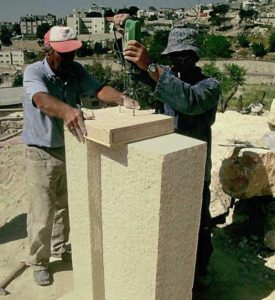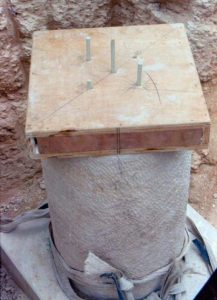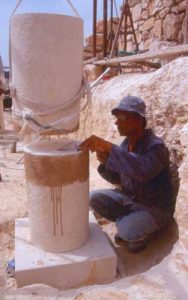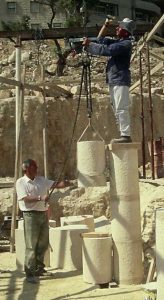Ancient Magdala, on the Sea of Galillee, provided us with a complete example of a classical Doric colonnade, extremely rare for the First Century. The capitals and columns of Magdala were measured to create precise specifications for replication in our synagogue. We brought these specifications to a quarry near Jenin, whose owner, Abu Abdu, specialised in carving the fine white limestone called Yabis, the stone used to carve the ancient columns and capitals found in excavations of ancient Nazareth.
The heavy door jambs and columns of the synagogue had to be hoisted and set together very precisely. On account of the fact that stacked stone construction is vulnerable to earthquakes, the door jambs and column drums were pinned together using fibreglass rods and stone epoxy to provide additional tensile reinforcement.
A wooden form called a jig was used to ensure accurate positioning and drilling of the pins. In antiquity, this reinforcement was achieved by either pouring or inserting lead into small niches centred into the columns.


To ensure an even distribution of load throughout the column, a thin coating of lime putty was applied between stones prior to final setting. The brown band on the lower column drum is mud, temporarily slurred on to prevent staining from the lime.
Hoisting the column drums and capitals was no simple matter, even with modern equipment, with the heavier elements (such as heart shaped columns) weighing more than 800 lbs.

